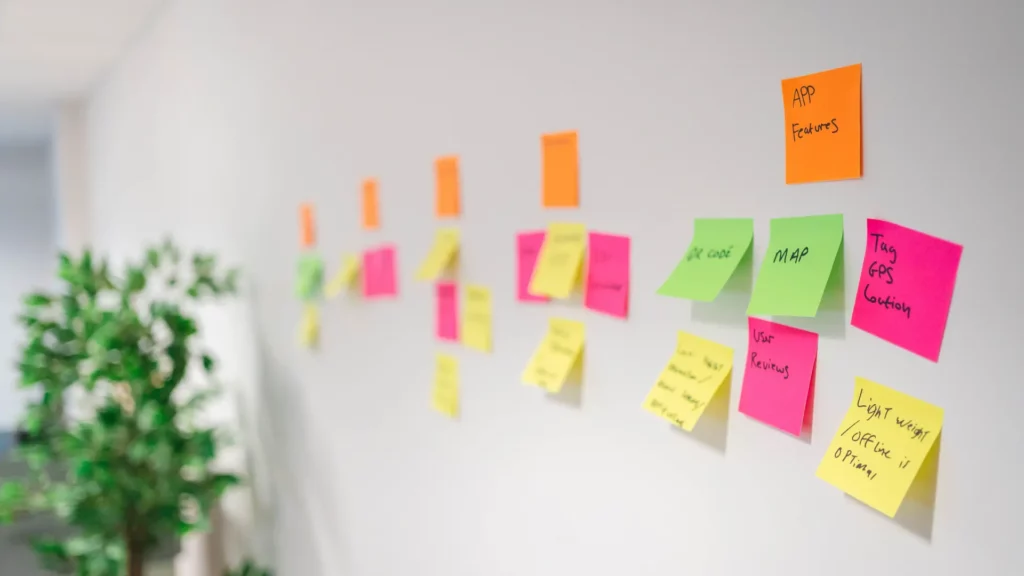
User-Centred Success: A Comprehensive Breakdown of the UX Design Process
In digital design, understanding the UX process is vital. This blog shows each stage with insights and examples, highlighting its importance.

- What is UX Design?
- The Importance of UX Design
- The UX Design Process in 6 Steps
- Tools and Techniques in the UX Design Process
- Enhancing UX Design Through Collaborative Efforts
- Navigating the Advantages and Challenges of a Well-Structured UX Design Process
- Embracing the UX Design Process
Stay in the loop with our latest updates
In digital design, understanding the UX process is vital. This blog shows each stage with insights and examples, highlighting its importance.
In the intricate and diverse digital design world, understanding the UX (User Experience) design process is not just beneficial; it’s essential. The UX design process is an organised series of steps designers follow to create an experience that resonates with users. This comprehensive guide will delve deeper into each stage, offering insights, tips, examples and shedding light on the importance of UX design in today’s digital landscape.
What is UX Design?
User Experience (UX) design is about the emotional and functional connection between the user and a product or service. It focuses on the entire user journey, including how they feel, think, and react while interacting with a product.
The Importance of UX Design
In a world where user expectations are continually evolving, UX design helps in the following:
- Enhancing User Satisfaction: Providing a smooth and enjoyable experience.
- Increasing Engagement: Encouraging users to interact more with the product.
- Building Trust: Creating a consistent and reliable experience.
- Improving Conversion Rates: Well-designed user flows lead to higher conversion rates.
The UX Design Process in 6 Steps
Now that we’ve covered the basics let’s jump into the UX design process.
1. Research & Discovery
- User Research: Interviews, surveys, and observations offer insights into user needs and behaviours.
- Market Analysis: Understanding competitors and industry trends positions your product strategically.
2. Planning & Strategy
- User Personas: These fictional profiles represent your typical users.
- User Journey Mapping: Detailing user interactions highlights pain points and opportunities.
3. Design & Prototyping
- Wireframing: Basic layouts help in visualising the structure.
- Prototyping: Interactive models facilitate user testing and early feedback.
4. Testing
- Usability Testing: Gathering user feedback is essential for refinement.
- A/B Testing: Comparing different versions helps in choosing the best design.
5. Implementation & Development
- Collaboration: Designers and developers must work closely.
- Quality Assurance: Rigorous testing ensures that the final product is bug-free.
6. Launch & Monitor
- Launch: Rolling out the product to the market.
- Monitor & Update: Regular monitoring and updates maintain the product’s relevance.
Tools and Techniques in the UX Design Process
UX design is about making apps and websites user-friendly. To do this, designers use various tools. It’s like having a special toolbox where each tool has its own job.
Research Tools: These tools help designers understand what users want.
- Google Analytics: This tool shows how people use a site or app. It gives data like which pages are visited the most.
- SurveyMonkey: Here, designers can create surveys to ask users questions directly.
Design and Prototyping Tools: Designers use these to draw and plan how things will look and work.
- Figma: A design tool that lets many designers work together online.
- Sketch: Another design tool to make drawings of apps or websites.
- Adobe XD: This tool lets designers create interactive prototypes to see how things will move and react.
Project Management Tools: These tools help teams stay organized.
- Jira: Used to track tasks and bugs. It’s very detailed.
- Asana: A tool to make lists of tasks and check them off.
Testing Tools: Once a design is ready, these tools help test if it’s easy for users.
- UserTesting: Here, real users try the designs and give feedback.
- Lookback: This tool lets designers watch how users interact with their design.
With all these tools, designers can make sure what they create is both pretty and easy to use!
Enhancing UX Design Through Collaborative Efforts
In the realm of UX design, the power of teamwork cannot be understated. The synergy among designers, developers, marketers, and stakeholders plays a pivotal role in achieving:
- Consistency: Achieving a cohesive design that resonates seamlessly across all platforms.
- Efficiency: Streamlining communication channels and project timelines for swift and effective deliveries.
- Innovation: The magic of collaborative brainstorming that nurtures a fertile ground for creative ideas to flourish.
Navigating the Advantages and Challenges of a Well-Structured UX Design Process
Benefits:
- User-Centered Precision: Meticulously tailoring a product to seamlessly resonate with the exact wants and needs of users.
- Economical Excellence: Skillfully curbing the need for extensive revisions and costly overhauls, thereby conserving both precious time and valuable resources.
- Assurance of Excellence: Embracing regular testing and thoughtfully assimilating feedback, resulting in the refinement and polish of the final product.
Challenges:
- Keeping Pace with Evolution: Skillfully navigating the ever-shifting currents of design trends, demanding a perpetual dance of adaptation and creativity.
- Harmonizing Stakeholders: Orchestrating unanimity among an ensemble of diverse stakeholders, a task intricately woven with the threads of effective communication and understanding.
- Navigating Resource Boundaries: Masterfully balancing the pursuit of unwavering quality with the constraints posed by available resources, a delicate art that hinges upon meticulous planning and allocation.
Embracing the UX Design Process
The UX design process is a multifaceted and dynamic journey. Its mastery requires an understanding of design principles, empathy, collaboration, and adaptability. The rewards, however, are immense, from satisfied users and successful products to a thriving business.
Whether you’re an aspiring designer looking to learn the ropes, a seasoned professional aiming to refine your skills, or a business seeking to improve your digital presence, the UX design process is an indispensable guide to creating meaningful and engaging user experiences.
If you want to learn more or engage with experienced UX professionals, get in touch today. Together, we can navigate the exciting journey of UX design, transforming ideas into tangible realities that delight users.

Let’s get started!
Great digital products aren’t just built, they’re co-created. Together, let’s breathe life into your idea, crafting solutions that stand out.
Contact

